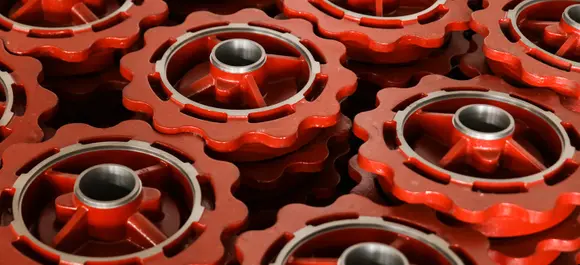Mobile:+86-311-808-126-83
Email:info@ydcastings.com
sand casting vs die casting
Sand Casting vs. Die Casting A Comprehensive Comparison
When it comes to metal casting methods, two of the most widely used techniques are sand casting and die casting. Each method has its own unique advantages and disadvantages, making them suitable for different applications and environments. Understanding the key differences between these two casting processes is essential for manufacturers and engineers looking to optimize production efficiency and quality.
Sand Casting The Traditional Method
Sand casting is one of the oldest and most versatile metal casting techniques. It involves creating a mold from a sand mixture, in which molten metal is poured to form a desired shape. The key components of sand casting include the pattern, sand, binder, and the metal to be cast.
Advantages of Sand Casting
1. Flexibility in Design Sand casting allows for intricate designs and complex geometries. This method can easily accommodate changes in design, making it suitable for prototype development and low-volume production.
2. Material Variety A wide range of metals, including aluminum, iron, bronze, and magnesium, can be used in sand casting. This versatility allows for various applications across different industries.
3. Cost-Effectiveness For small production runs, sand casting can be more economically viable due to lower upfront costs associated with mold production. The molds themselves can be made with minimal equipment and labor.
4. Ideal for Large Parts Sand casting is particularly advantageous for large components, such as engine blocks or heavy industrial parts, where the size of the mold would be challenging to achieve with die casting.
Disadvantages of Sand Casting
1. Surface Finish The surface finish of sand casted parts is generally rougher than those produced by die casting. Additional machining or finishing processes may be required.
3. Dimensional Tolerance Sand casting typically has wider dimensional tolerances compared to die casting, which might be a concern for parts requiring precision.
sand casting vs die casting

Die Casting The Precision Method
Die casting, on the other hand, is a more modern and efficient casting process that involves forcing molten metal into a mold cavity under high pressure. This technique is primarily used for non-ferrous materials, such as aluminum, zinc, and magnesium alloys.
Advantages of Die Casting
1. High Precision and Surface Finish Die casting is known for its ability to produce parts with excellent dimensional accuracy and superior surface finish. This reduces the need for post-casting machining.
2. Rapid Production Rates The die casting process allows for faster production rates, making it highly efficient for large-scale manufacturing. The same mold can be reused multiple times, leading to consistency in production.
3. Thin Walls and Lightweight Parts Die casting can produce very thin-walled parts, which is beneficial for reducing weight without sacrificing strength. This is particularly sought after in automotive and aerospace industries.
4. Reduced Labor Costs Since die casting is mostly automated, labor costs are significantly lower compared to sand casting, which may involve more manual processes.
Disadvantages of Die Casting
1. Higher Initial Costs The production of die casting molds is more expensive and time-consuming compared to sand molds, making die casting less cost-effective for low-volume production.
2. Limited Material Options Die casting is primarily limited to non-ferrous metals, which can restrict its applicability depending on the desired material properties.
3. Complex Injection Systems The high pressure used in die casting requires sophisticated machinery and technology, which may not be feasible for all manufacturers.
Conclusion
In summary, the choice between sand casting and die casting ultimately depends on the specific requirements of the project. Sand casting is ideal for low-volume production, intricate designs, and a wider range of materials, while die casting excels in high-volume production with superior precision and surface quality. By understanding the strengths and limitations of each method, manufacturers can make informed decisions that align with their production goals and technical specifications.
-
Why Should You Invest in Superior Pump Castings for Your Equipment?NewsJun.09,2025
-
Unlock Performance Potential with Stainless Impellers and Aluminum End CapsNewsJun.09,2025
-
Revolutionize Your Machinery with Superior Cast Iron and Aluminum ComponentsNewsJun.09,2025
-
Revolutionize Fluid Dynamics with Premium Pump ComponentsNewsJun.09,2025
-
Optimizing Industrial Systems with Essential Valve ComponentsNewsJun.09,2025
-
Elevate Grid Efficiency with High-Precision Power CastingsNewsJun.09,2025











